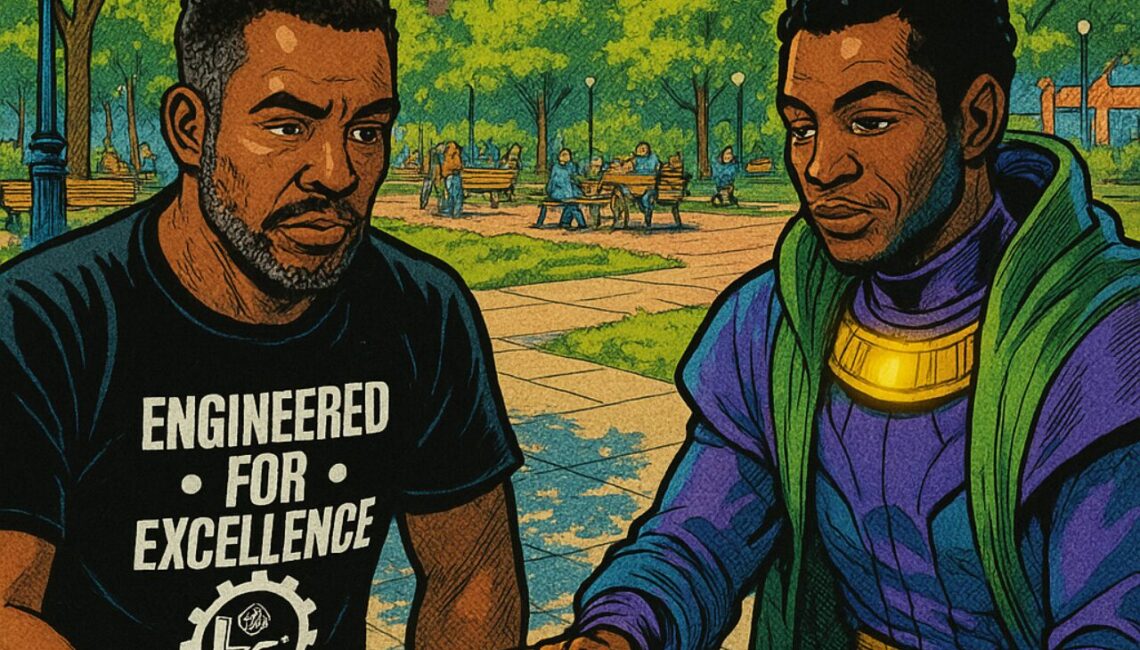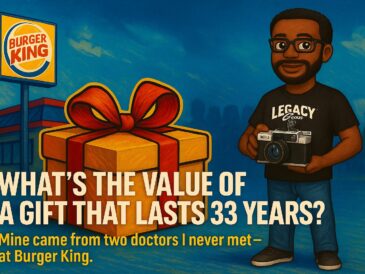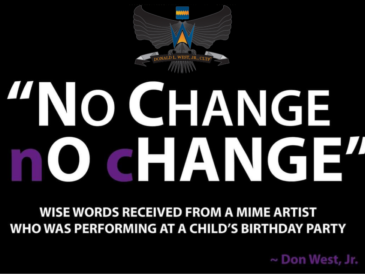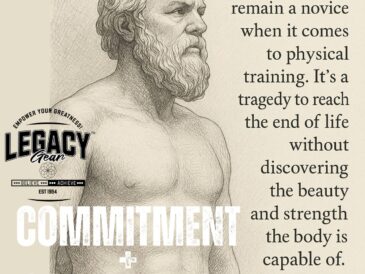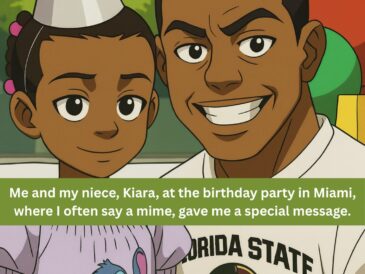
Rare Air

I am almost fifty-two years old, and the older I get, the clearer the pattern becomes. Life is not a ladder of accomplishments; it is a sequence of elevations—thin stretches of atmosphere where the oxygen changes and you learn how to breathe again.
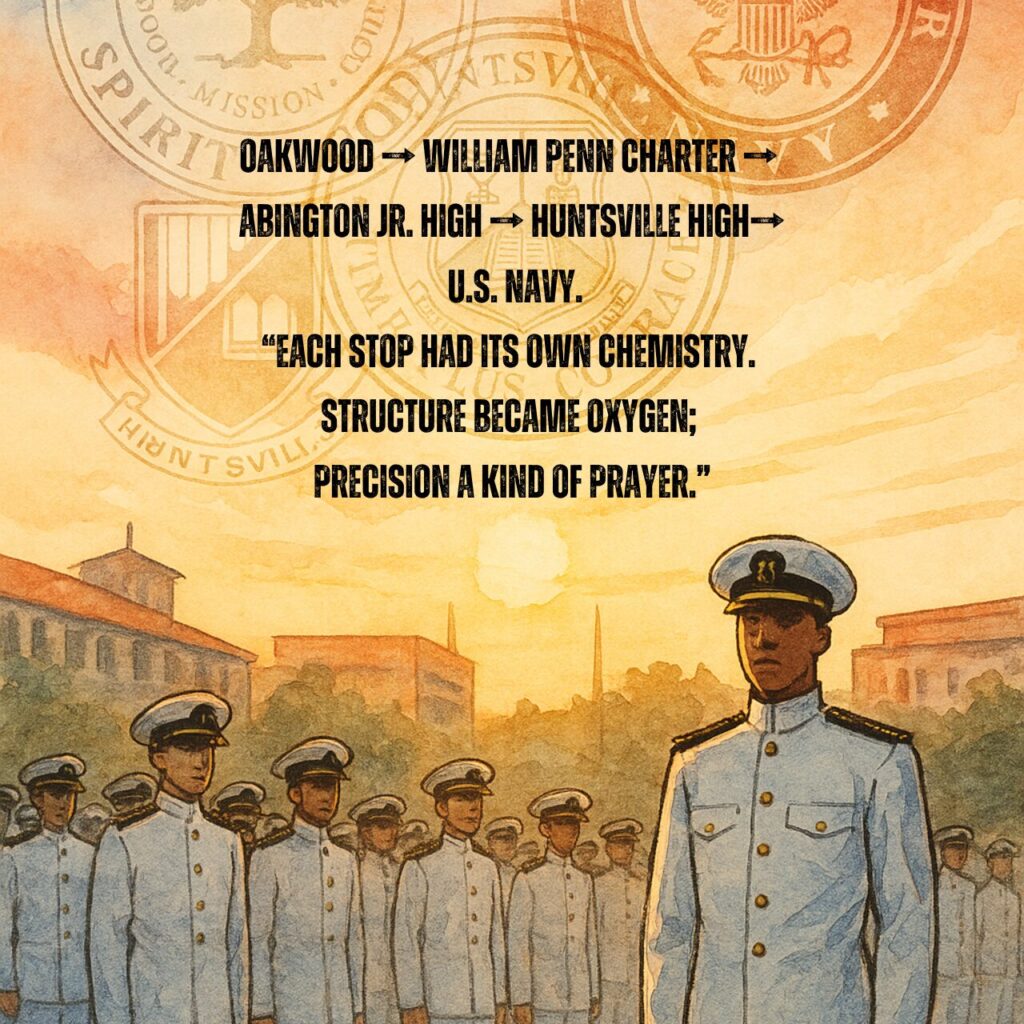
Oakwood Elementary in Huntsville, Alabama, was the first altitude shift, where imagination first whispered that I could build worlds of my own. William Penn Charter School in Philadelphia taught that imagination means little without discipline. Abington Junior High showed that change itself can be a teacher. Back home at Huntsville High I learned that competition sharpens identity. Later, the United States Navy in San Diego replaced chaos with cadence; structure became oxygen, precision a kind of prayer. Each stop carried its own chemistry—its own lesson in how to breathe.
Those are stories for another day. Today begins at Florida State.

Tallahassee in the mid-nineties was heavy with humidity and ambition. That is where I met Warrick Dunn. He moved like quiet conviction—no bravado, just a rhythm of humility and repetition that made excellence look effortless. Watching him practice was like watching meditation disguised as speed. Years later I would learn that neuroscientists call this entrainment: the body and brain syncing rhythm until intention and movement become the same act. Warrick lived that truth instinctively.
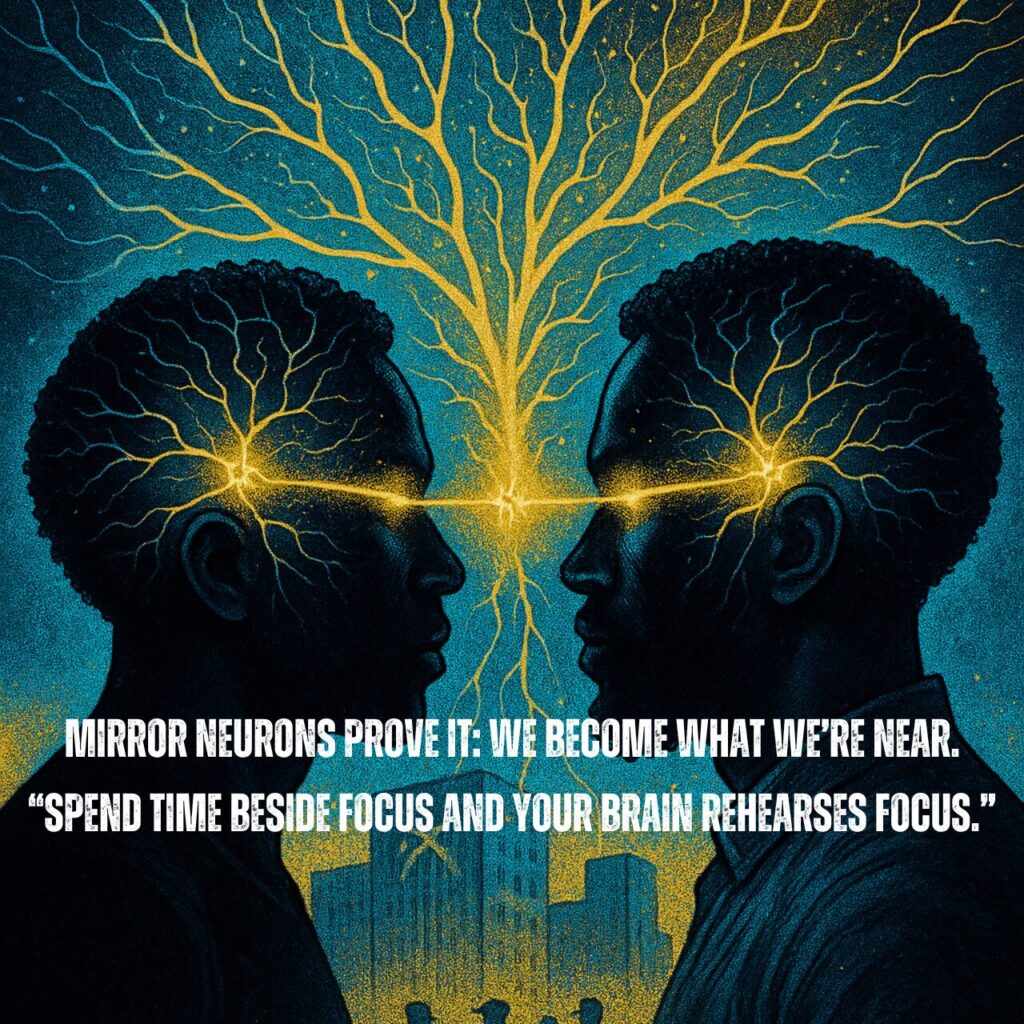
A year later I met Sean Pittman, who at the time was a young lawyer living next door. Even then he carried himself like a man designed for larger rooms—composed, gracious, sharp. Our late-night conversations on that Tallahassee street became my first lesson in proximity as power. We were not quoting science, but we were living it. Decades later I would read about mirror neurons—cells that fire both when we act and when we watch someone else act. They are the biological proof that energy is contagious. Spend time near focus, and your brain rehearses focus. Share air with discipline, and your nervous system memorizes it. Florida State was my first experiment in that invisible science.

After Florida came California and a different laboratory. Newport Beach with Leigh Steinberg was professional rare air—oxygen mixed with expectation. Leigh built his reputation on empathy, seeing people before profit. Jeff Moorad balanced empathy with logic sharp enough to cut glass. Scott Parker, Dave Dunn, Wm. David Cornwell Sr., Joby Branion, and Brian Murphy each carried a distinct wavelength of mastery. In that office, excellence was not discussed; it was assumed. Looking back, I recognize what sociologists call behavioral convergence: over time, small groups unconsciously synchronize tone, pace, and precision. That is why a great team moves like one organism. We did not study it; we breathed it.

Every meeting felt like a two-minute drill. You learned to hear intention behind words. The brain adapts to that intensity through Hebbian learning—neurons that fire together wire together. Each repetition of high standards carved new neural pathways for composure and accuracy. Excellence was becoming muscle memory.
In 2014 I returned for a second stint with Leigh Steinberg Enterprises. The skyline had changed but the atmosphere had not. That round brought Keith Harris into my orbit. Working beside him was like standing next to calm electricity—steady, charged, silent. Keith possessed the rare balance of humility and authority that steadies a room without volume. Re-entering that world reminded me of another truth neuroscience affirms: once you have experienced excellence, your brain keeps its map. Reactivate it and those dormant circuits flare alive again. Excellence waits to be re-oxygenated.
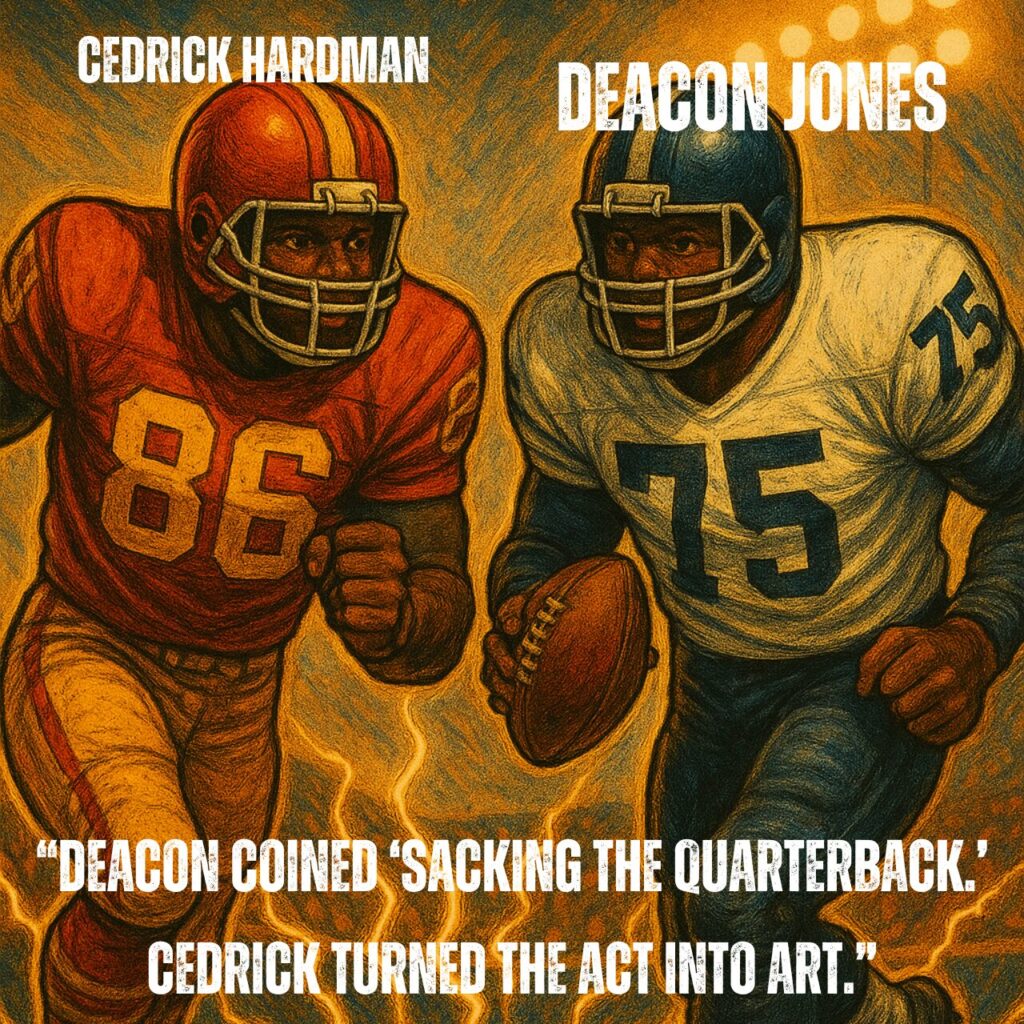
California also gave me Cedrick Hardman. To anyone who loved football, he was Big Nasty—the 1970s’ most dominant pass-rushing specialist. His friend Deacon Jones, The Original Sack Master, coined the phrase “sacking the quarterback,” turning the sack into a household term. Cedrick carried that torch forward, blending power with artistry until defense looked like dance.
We spent evenings in his upstairs den in Laguna Beach, the Pacific murmuring through open windows. We would talk about life, legacy, and the people who changed the air around them. One night, after naming a long list of those souls, Cedrick leaned back and said, “Man, we must be made of rare air.”
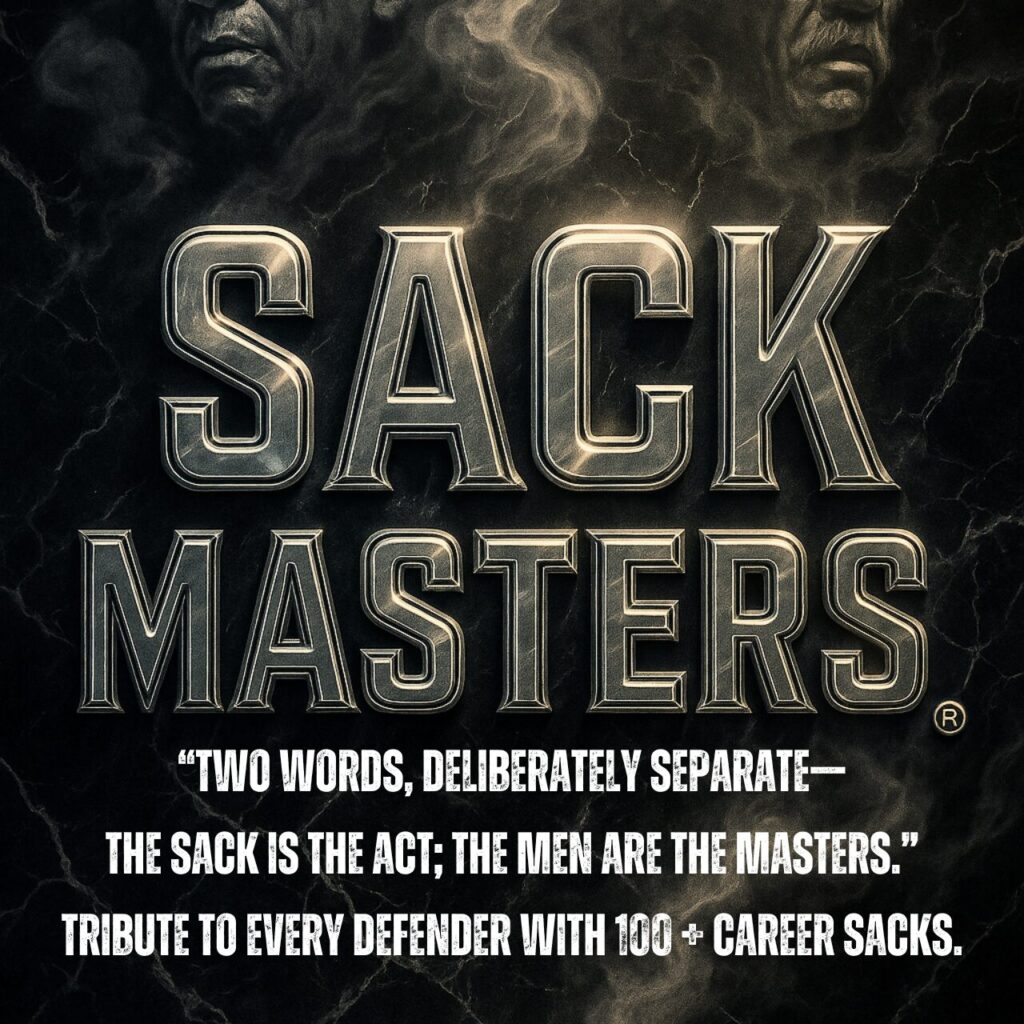
That sentence named what I had felt my whole life. Rare Air became our code for the unseen fraternity of people who refuse mediocrity. That same night birthed Sack Masters ®—two words, intentionally separate, because the sack is the act and these men were the masters of the act. It was conceived as a living tribute to Deacon, Cedrick, and every defender who had crossed the hundred-sack threshold. It was not marketing; it was memorial—a salute to craft, consistency, and courage.

Cedrick treated his body like a priceless piece of marble in the hands of a master, continuously sculpting himself. To him, muscle was clay and discipline the chisel. Physiologists might call his ritual progressive adaptation—the body’s cellular memory responding to consistent stress by rebuilding stronger fibers. Cedrick did not need the terminology; he embodied it. Movement was theology. Sweat was scripture. Watching him work was witnessing compound interest in motion: tiny investments, repeated daily, producing exponential return.

When Cedrick passed in 2018 the air went thin. For two years I carried his lessons like weight plates across my chest. Grief, I learned, is respiration—you forget to inhale until something forces you. In 2020 that something was creation. I picked up a paintbrush for the first time and let color speak where words had failed. That was the birth of #ArtByDubbs and the beginning of the Sack Masters Series on canvas. Each piece was a study in kinetic memory, a translation of Cedrick’s energy into pigment. Neuroscientists call it neuroplasticity—the brain reorganizing itself through new creation—but I just called it healing.
Each stroke of paint slowed my pulse. Each color felt like an inhale I had not taken in years. Researchers have measured this for decades: creative acts quiet the limbic system—the part that screams loss—and activate the prefrontal cortex, where possibility lives. Grief and imagination share a doorway. Step through, and sorrow becomes design.
Art also made me see that the science of becoming is not abstract—it is chemical. Every thought leaves a trace of dopamine or cortisol. Every repetition strengthens one circuit and weakens another. What we call discipline is the slow re-engineering of those circuits. Cedrick had lived that long before any of us could cite a study.
I began to think deeply about the mathematics of effort. Economists call it compound interest; psychologists call it habit stacking; to me it is the physics of persistence. Small, daily choices accrue like cents that eventually buy freedom. The same law governs muscle fibers, neural pathways, relationships, and legacy. Nothing truly worthwhile grows linearly—it grows exponentially after enough unseen deposits.
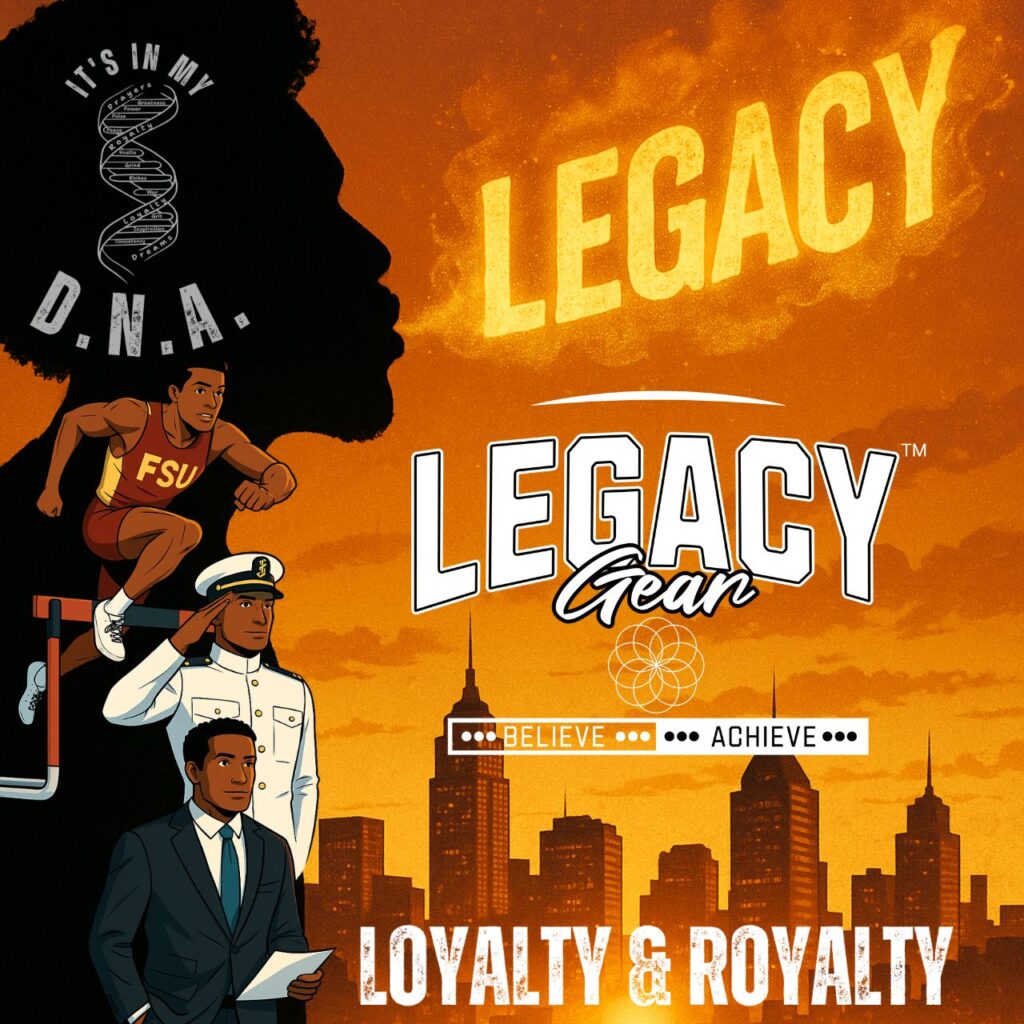
That truth pulled me back to the environments that had shaped me. At Florida State, my nervous system learned to mirror discipline. In Steinberg’s offices, my professional circuits wired themselves to precision. In Cedrick’s den, my physiology remembered what faith in motion looks like. Together they form a map of proximity—proof that who we spend time with changes who we are at the cellular level.
Neuroscience calls it Hebbian learning; sociology calls it social contagion; spirituality might call it anointing. Different languages, same principle: energy transfers. You cannot breathe someone else’s air without taking in some of their chemistry.
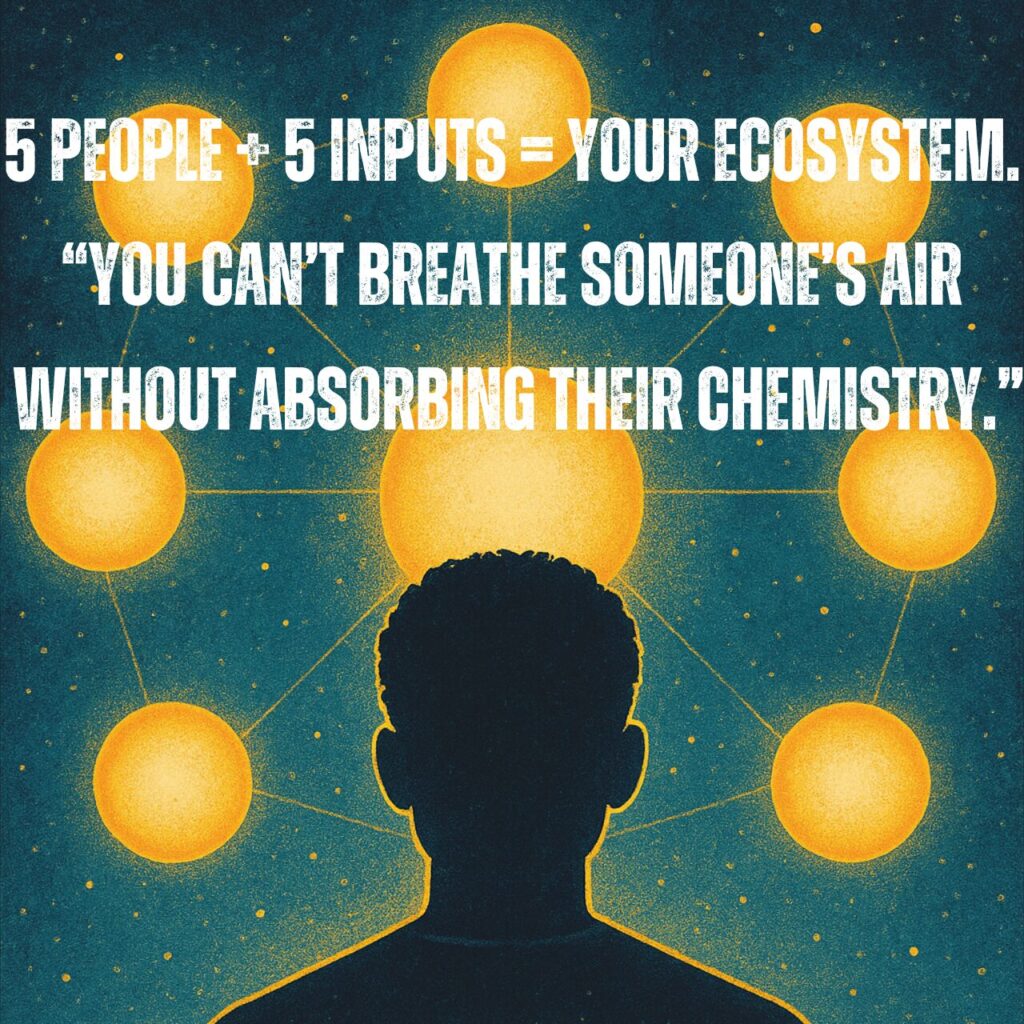
That is where my Law of Fives emerged. Every human being is shaped by ten streams: five people we spend the most time with, and five primary sources of information or entertainment we consume. Those ten inputs form the ecosystem of our mind. Feed them carelessly and you suffocate potential; curate them with intention and you rise.
The five people are the air we breathe. The five inputs are the food we eat. Together they determine our cognitive nutrition.
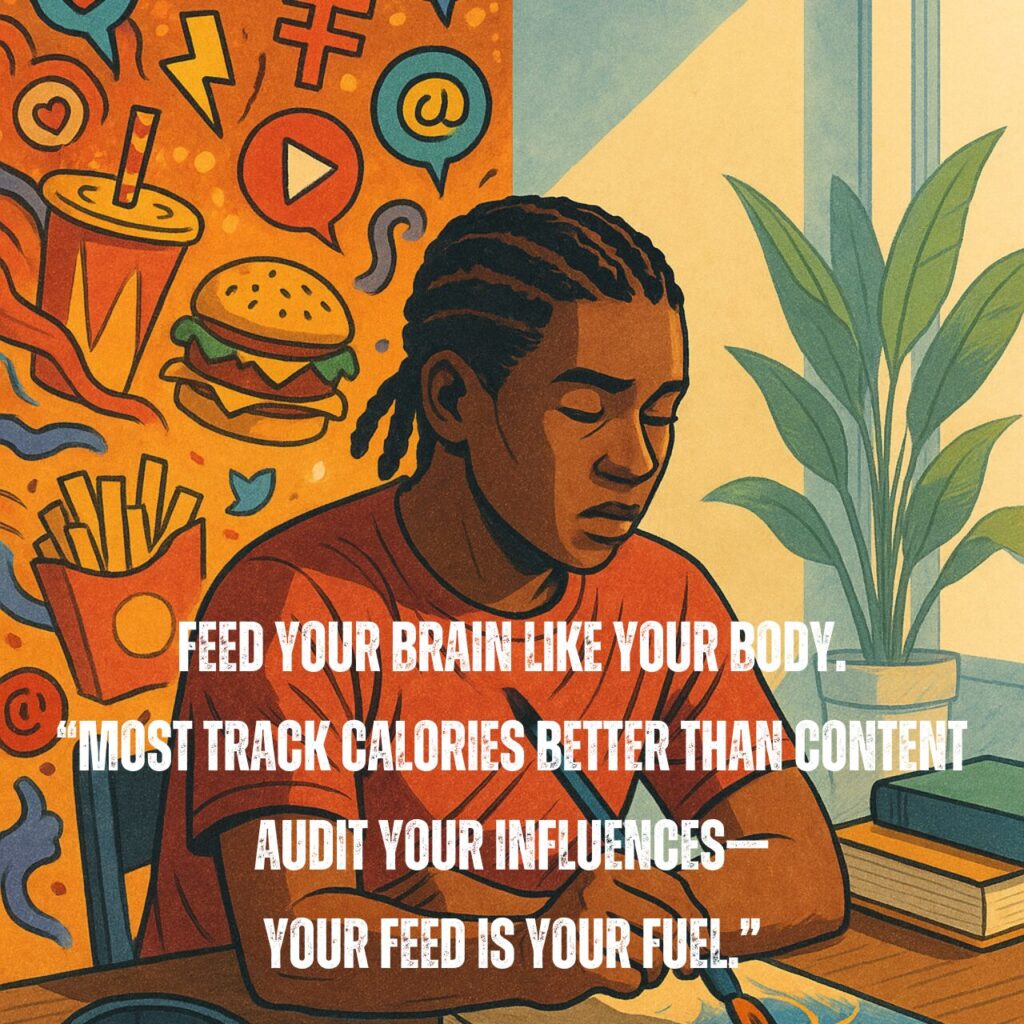
Most of us monitor calories better than content. We track steps but not sentences. Yet the same neurochemical mechanisms govern both. Junk information spikes dopamine like sugar—momentary pleasure followed by crash and craving. High-quality knowledge, art, and conversation release slower, steadier rewards that build endurance. The brain, like the body, thrives on clean fuel.
Understanding that shifted the way I live. I began auditing my influences the way an athlete audits macros. Which conversations left me energized? Which headlines left me hollow? Which relationships expanded my sense of possibility, and which compressed it? That audit became my own internal wellness check—my Rare Air Audit.
- Measure the air. List the five people you interact with most. Do they breathe ambition, empathy, growth, or recycle fear?
- Filter the feed. Identify the five main channels of information entering your mind. Adjust the mix until it aligns with who you want to become.
- Monitor the response. Notice your physiological cues—heart rate, tension, focus—after each exposure. Your body will tell you which air is clean.
Run that audit often, and you will begin to sense elevation.
Legacy Gear was born from that awareness. It is more than fabric; it is wearable philosophy. Each design—Earn Your Legacy, Built on Hustle and Grind, Just Do Ten—is a coded reminder of the biology of growth. Cotton as neuro-affirmation. Thread as testimony. Every time someone pulls on a tee and steps into motion, they are rehearsing the neural pattern of persistence.
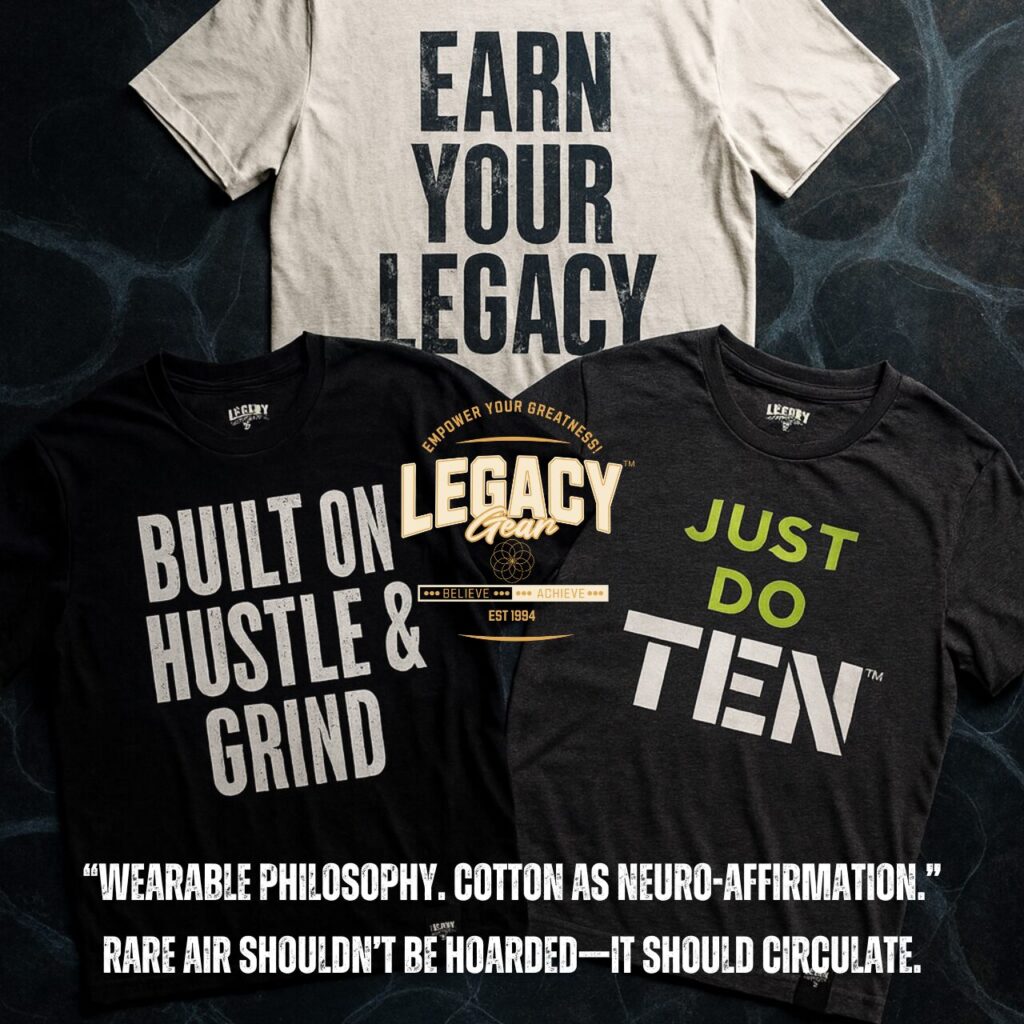
Legacy Gear exists because rare air should not be hoarded; it should circulate. It is the tangible extension of everything I have learned from the men and moments that shaped me—Warrick’s humility, Sean’s intellect, Leigh’s empathy, Jeff’s precision, Cornwell’s counsel, Joby’s stewardship, Keith’s calm, Deacon’s invention, Cedrick’s relentless sculpture. Each of them left traces in my circuitry, and now those traces speak through fabric.
I often think of Cedrick’s den, the hum of the ocean behind his laugh. If muscle was his marble, then legacy was his museum. When he passed, I promised myself that the lesson would not. #ArtByDubbs became the gallery where that promise lives, and every brushstroke keeps the oxygen moving.
Science and spirit converge here: neurons and souls both need flow. Stagnation kills both.
Now, approaching fifty-two, I have learned that legacy is not something you leave—it is something you build in real time through chemistry and choice. Influence is physics. Faith is neuroplastic. Love is a form of energy transfer that never fully dissipates.
The rarest air is not the oxygen of achievement; it is the shared breath of elevation—the invisible lift you give another person just by showing them what is possible.
We are all breathing something. The only real question is: what kind of air do you want to live in?
— Don West Jr.

